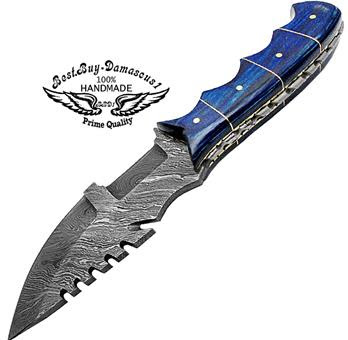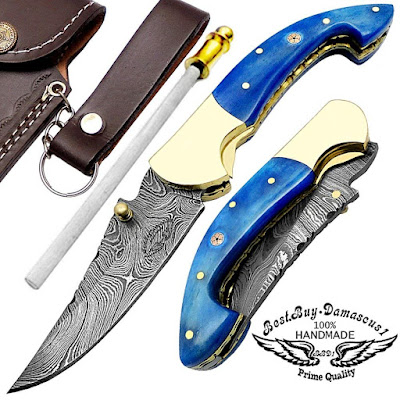Damascus steel hunting Knives ... WHAT IS AN ART?
Very few are probably aware that in Sardinia there is a
great tradition and art in the creation of knives. Once you start to
investigate, a completely new world is opened, composed of different materials,
styles, blades, transforming the object into a true work of art.
The damascus
steel hunting Knives are divided into two types; the leppa, a knife
with a fixed blade, and resolves, a razor. Another crucial characteristic comes
from the shape of the blade, also in two types; The broad and rounded leaf is
used by hunters and is called foglia di lauro (bay leaf), while the thin leaf
used by shepherds is called foglia di grano (wheat leaf).
So these are the fundamental aspects of all the knives that
have infinite nuances. The knives of the collectors of Sardinia, for example,
have finely cut leaves, laminated and loose, consisting of hundreds of metal
sheets pressed together (damacus) creating a pattern that resembles
fingerprints or wood. The handles are often made with lamb's horns, in the
shape of a boar's head, of a mufflon sheep, a dog ... extraordinary.
The main area where these small "works of art" are
made is concentrated in the southwest of the island, in Guspini and Arbus,
approximately 60 km above Carbonia. Another very famous place in the creation
of knives is Pattada, located in the north of the island in the
"Barbagia", the heart of the interior of Sardinia, between Olbia and
Nuoro.
The traditional Pattada knife is long and narrow and the
handle is always made from the horn of a Mufflon sheep. Below is a photograph,
to have a clearer idea.
A famous knife maker named Paolo Pusceddu is from Pattada.
Fifteen years ago he broke the record of having created the largest knife in
the world. He weighed over 80 kilos! Then he went on to build the heaviest
knife in the world, which weighs 295 kilos and measures almost 5 meters long
... You can go to see him at the knife museum in Arbus.
Another magician in the world of Pattada knives is called
Piero Fogarizzu, his skill lies in the very particular leaves of Damascus that
have made him famous throughout the world. He designs "made to
measure" knives and people have to wait a long time before getting one. If
you are a little intrigued by the Sardinian knife, here are some important tips
on how to distinguish the true Sardinian artifact.
1) THE HANDMADE KNIFE IS SIGNED BY THE LEAF MANUFACTURER who
made it, the signature is usually on the blade and is often the last name of
the knife maker or the pseudonym of a symbol.
2) THE SARDINIAN KNIFE DOES NOT HAVE A LEAF SECURITY BLOCK,
this is very important; the blade is free, the handmade knives do not open or
there are no strange mechanisms to open or close.
3) THE HANDLE MUST BE IN MUTTON HORN. In some cases there
may be variations in ox bones or some types of nuts, they can never be plastic
or resin.




Comments
Post a Comment